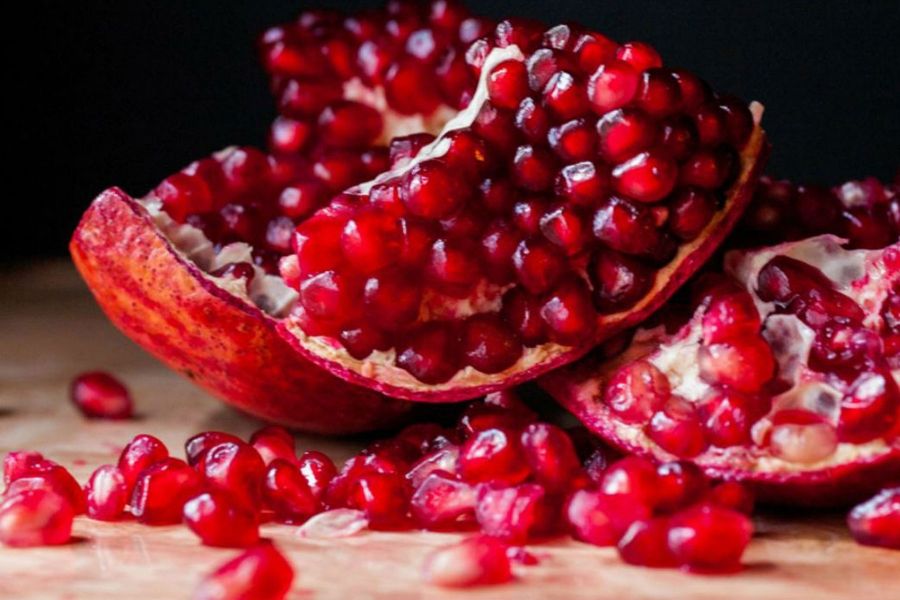I love fall. I love the crispness in the air, the angle of the sun and the mellowing of life. The shades of fall are everywhere. The autumnal colors of the leaves, green, yellow, orange and vibrant red, are echoed in the produce that is harvested. Think about it; squashes, pumpkins, root vegetables, persimmons and apples, all represent the hues of the season. But one of the most exciting appearances, at this time of year, is the ancient ruby red fruit, the pomegranate.
In Greek mythology, it is said that the prodigious pomegranate is the very reason we have our season of fall. The tale is told of Persephone, the daughter of the goddess of the harvest, who was evilly tempted to eat six seeds of the irresistible pomegranate. Consequently, she was banished from Earth for six months every year for eternity. Since then her mother, Demeter, goes into mourning during her time of absence, and the earth goes fallow. Thus, the seasons of fall and winter. I have to tell you, learning this made me feel so negligent. If I had known this earlier, I NEVER would have packed pomegranates in my daughter’s lunches! Oh, the things we learn too late as parents… Redemptively for me, now-a-days this fruit is actually considered a positive symbol of good fortune, good luck and good life. So, go ahead, it’s safe for us (and ourkids) to eat this luscious fruit, and here are some good reasons why we should. So very powerful is the “pom”, it has overcome its dark legacy and is now considered an important “superfood”. We all know red wine contains a high level of anti-oxidants, and so does green tea, right? Well what if I told you the juice of pomegranate contains three times as much? I know amazing, right? “Punica granatum L. (pomegranate) has several health benefits. Pomegranates can help prevent or treat various disease risk factors including high blood pressure, high cholesterol, oxidative stress, hyperglycemia, and inflammatory activities.” Certain components of pomegranate, such as polyphenols, have potential antioxidant, antiinflammatory, and anti-carcinogenic effects. The ingredients in this fruit can inhibit cancers of the lung, breast, colon, skin and prostate. It’s polyphenols, flavonoids, antioxidants and anthocyanins help with inflammation and cardiovascular disease, also, possibly joint inflammation.
There have even been studies that have shown that pomegranate juice can help with Alzheimer’s disease. The fruit itself has lots of seeds (it’s actually a berry) and therefore good amounts of fiber too. There is so much you can do with this beautiful fruit. Drink the juice, put it in a salad (I like it with arugula, hot coppa and parmesan cheese), sprinkle it on vegetables, meats and desserts. You could be even more daring and put one in your kids’ lunch! Be sure to learn more from Chef Jeremy about what to do with “poms”… without upsetting your parents. Enjoy!
More Pomegranate Facts

